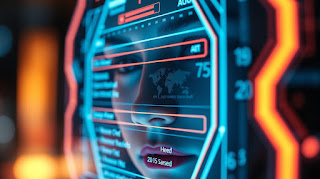Technology is evolving at an unprecedented pace, and 2025 is shaping up to be another transformative year. From AI-powered search engines to fully autonomous robotaxis, these advancements are not just shaping industries but also revolutionizing how we live and work.
Whether you're a business owner, tech enthusiast, or just curious about the future, staying ahead of these trends can help you adapt and seize new opportunities. In this article, we will dive deep into the top 10 technology trends of 2025, their impact, and what they mean for the world.
How It Works:
Traditional search engines list web pages, but AI search engines summarize the best information instantly.They use Natural Language Processing (NLP) and Machine Learning (ML) to create precise, well-structured responses. The AI constantly learns from new data, making answers more reliable and contextually accurate over time.
Impact on Businesses and Consumers:
Content creators may see reduced website traffic as people get direct answers from AI rather than clicking on links. Companies must optimize their content for AI search engines to stay visible in search results. Users will get faster, more precise information without spending hours searching through multiple sources.
Future Possibilities:
AI search engines may soon provide personalized responses based on user preferences. Voice search integration will allow people to get answers just by speaking, making the search experience seamless.
2. The Rise of Small Language Models (SLMs)
For years, large AI models like ChatGPT and Google Bard have dominated, but they require massive computing power. In 2025, Small Language Models (SLMs) are emerging as a game-changer.
Why SLMs Are Important:
They require less computational power, making them faster and more energy-efficient. They can run on local devices like smartphones and IoT gadgets, reducing dependence on cloud servers. They enhance privacy, since data processing happens locally rather than being sent to external servers.
Industries Benefiting from SLMs:
- Healthcare: AI-powered diagnostic assistants that can run on local devices.
- Banking: Fraud detection algorithms that work in real-time without sending data to cloud servers.
- Customer service: AI chatbots that provide instant responses without latency issues.
3. Robotaxis: The Future of Urban Transportation
Self-driving technology has been in development for years, but 2025 is the year when fully autonomous robotaxis become mainstream.
How Robotaxis Work:
- They use AI-powered vision systems, LiDAR sensors, and GPS networks to navigate roads safely.
- Machine Learning algorithms help them adapt to unpredictable traffic situations.
- These vehicles communicate with smart traffic systems to optimize routes and reduce congestion.
Key Benefits:
- Safer roads: Eliminates human errors, which cause 90% of accidents.
- Cost reduction: No driver salaries mean lower transportation costs.
- Reduced pollution: Many robotaxis are electric, helping to lower emissions.
Challenges Ahead:
Legal regulations and public trust issues need to be addressed before mass adoption. Cybersecurity concerns exist, as hackers could potentially take control of these vehicles.
4. Neurological Enhancements: Merging Mind and Machine
Brain-computer interfaces (BCIs) are no longer just science fiction. In 2025, we are witnessing neurological enhancements that allow people to interact with computers using their thoughts.
Current Applications of BCIs:
- Medical Use: Paralyzed individuals can control robotic limbs.
- Cognitive Enhancement: Devices that enhance memory and focus for students and professionals.
- Virtual Reality: Imagine playing video games just by thinking about your next move!
Challenges and Ethical Concerns:
- Privacy risks: Could companies exploit brain data for advertising?
- Long-term health effects are still unknown.
- Affordability: These devices are currently expensive and not widely available.
Companies like Neuralink, Kernel, and OpenBCI are leading the charge, working on making this technology accessible to all.
5. Post-Quantum Cryptography: A New Era of Cybersecurity
Quantum computing is advancing quickly, and with it comes a major cybersecurity risk: traditional encryption methods may soon become obsolete. This has led to the rise of Post-Quantum Cryptography (PQC).
Why PQC Matters:
Current encryption methods like RSA and AES will be vulnerable to quantum attacks. PQC ensures financial transactions, medical records, and personal data remain secure. Governments worldwide are adopting new cryptographic standards to prepare for the quantum era.
Who Will Be Affected?
Banks and financial institutions must upgrade their security systems. Cloud storage providers need to adopt quantum-resistant encryption. Government agencies must safeguard sensitive information from potential quantum cyberattacks.
6. Spatial Computing: The Next Level of Augmented Reality
Spatial computing takes AR/VR technology a step further by seamlessly integrating digital objects into the real world.
Applications of Spatial Computing:
- Retail: Virtual fitting rooms where customers can "try on" clothes before purchasing.
- Education: Medical students practicing surgeries on holographic patients.
- Workplace: Virtual office spaces where teams collaborate in real-time.
Apple's Vision Pro, Microsoft's HoloLens, and Meta’s Quest devices are making spatial computing a mainstream reality.
7. Hybrid Computing: Merging Quantum and Classical Computers
While quantum computers are still in their early stages, Hybrid Computing is the next big step. It combines the power of traditional computers with quantum processors, making advanced problem-solving possible.
Industries Benefiting from Hybrid Computing:
- Pharmaceuticals: Simulating drug reactions for faster medicine development.
- Supply Chain Management: Optimizing global logistics with real-time quantum calculations.
- Artificial Intelligence: AI models trained at exponentially faster speeds.
IBM and Google are pioneering Hybrid Quantum Computing, making it accessible to researchers and businesses.
8. Extended Reality (XR) for Training and Work
XR, which includes Virtual Reality (VR), Augmented Reality (AR), and Mixed Reality (MR), is reshaping how we train and work.
Use Cases:
- Healthcare: Surgeons practice complex procedures in virtual environments.
- Education: Students learn history by experiencing historical events in VR.
- Corporate Training: Employees use AR to learn machinery operations hands-on.
Expect companies like Meta, Apple, and Microsoft to expand XR adoption across industries.
Final Thoughts
Technology in 2025 is smarter, faster, and more integrated than ever before. From AI-powered search engines to quantum computing, these trends are shaping the future in ways we are only beginning to understand.


